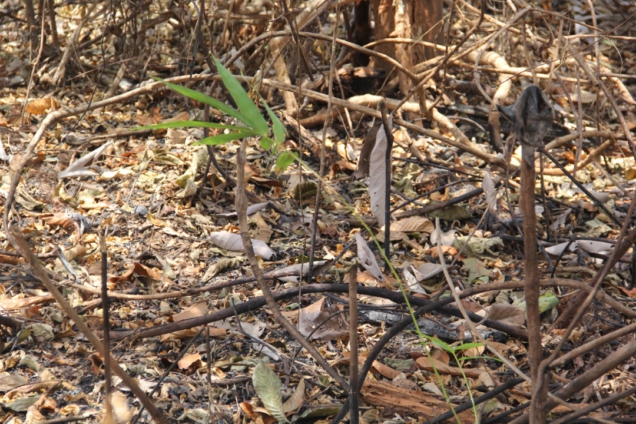At least 33 animals and 39 plants no longer have wild populations and are only kept alive in zoos, aquariums, botanical gardens, seed banks, and other institutions.
At least 15 of these animals have been reduced to less than 500 individuals. Recent findings published in Journal Science titled: "Extinct in the wild: The precarious state of Earth’s most threatened group of species," have revealed.
The researchers discovered that 11 of the 95 species declared extinct in the wild since 1950, have become extinct since the 1990s. On the flip side, 12 of these species have been successfully reintroduced, brought back from the brink of extinction.
The study emphasises the challenges of preserving genetic diversity in captivity, as well as the need for increased support, as well as better coordination and communication among conservation organisations.
According to Donal Smith, a postdoctoral researcher at the Zoological Society of London, and Sarah Elizabeth Dalrymple, a senior lecturer in conservation ecology at Liverpool John Moores University, “It’s a strange liminal space: disappeared from the wild, yet not entirely extinct. And it’s one not peculiar to the Socorro dove,"
According to the researchers, these species are classified as "extinct in the wild" by the IUCN Red List of Threatened Species, which is the system conservation biologists use to assess and communicate extinction risk.
It's a diverse group that includes the manicillo, a relative of the peanut found only in Bolivia; the Tali palm, which was discovered from a single specimen on the campus of Dhaka University in Bangladesh; and a number of tree snails from the Pacific Ocean's remote Society Islands.
"In one sense, here is something worth celebrating: a group that has given extinction the slip. But what does the future look like for these species? Human care will not preserve them indefinitely. On the contrary, the longer they spend in captivity, the more they risk becoming inbred or losing the genetic diversity that helps them resist diseases and other threats. Eventually, outright extinction looms, especially if their populations are small," the researchers indicate.
Smith expressed grave concern after reviewing the available data on these 72 species. For starters, many species have an alarmingly low number of remaining individuals. Only six of the 30 extinct in the wild (EW) animal species with sufficient data, for example, have populations larger than 1,500 individuals; half have fewer than 500.
It's dangerous to have only a few individuals left in a species, especially if they're all in one place. Catastrophes, disease, a lack of commitment from institutions responsible for maintaining these populations, or simply having a generation of offspring of only one sex could all lead to the extinction of a species, according to Smith.
As international commitments to prevent extinction and improve the status of threatened species go unfulfilled, a crisis of species loss unprecedented in human history worsens.
According to the researchers, the field of conservation biology has begun to demonstrate that species can be recovered and extinctions in the wild can be avoided and even reversed. These successes indicate that the post-2020 global biodiversity draft targets of slowing the rate of extinction and reducing the proportion of threatened species are achievable.
"A nexus of responsibility, vulnerability, and opportunity lies in those species that—having been entirely extirpated in the wild—exist solely in zoos, aquariums, botanical gardens, or seed banks—i.e., those that qualify for the International Union for Conservation of Nature (IUCN) Red List of Threatened Species (Red List) category of extinct in the wild (EW)," the researchers said.
Latest Stories
-
Putin says Russia will use new missile again in ‘combat conditions’
39 mins -
We have rescued kidnapped Emirates Airlines Airport Services Manager – Police
1 hour -
Bawumia-branded campaign vehicle burns, occupants escape unscathed
1 hour -
Bawumia, thousands observe ‘Jummah’ prayers as new Walewale Central Mosque is commissioned
2 hours -
Peasant farmers hail Bawumia as Walewale Watermelon Factory is commissioned
2 hours -
Joy FM Prayer Summit for Peace ends in electrifying worship and prayer
9 hours -
The Conscience of Leadership: A call to President Akufo-Addo on Ghana’s environmental devastation
10 hours -
Ghanaian youth unaware of their right to hold politicians accountable – Youth Bridge Foundation
11 hours -
Judge delays Trump sentencing for a third time
11 hours -
2024 WAFCON: Ghana drawn against defending champions South Africa in Group C
12 hours -
Photos from DW-JoyNews street debate on ‘galamsey’
12 hours -
Mimmy Yeboah: Blending heritage with global sophistication, confidence redefined through couture
13 hours -
100 Most Influential People Awards 2024: Brain Hill International School’s Director Mary Anane Awuku honoured
13 hours -
Akufo-Addo commissions 97-km Tema-Mpakadan railway line
13 hours -
Majority requests recall of Parliament
13 hours

